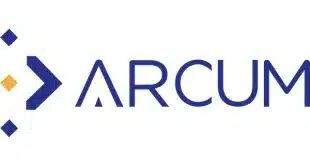The process that led to Metavante Corp.'s pending spin-off from Milwaukee-based bank-holding company Marshall & Ilsley Corp. started two years ago as the payment processor sought ways to continue making acquisitions, according to a registration statement M&I filed this week with the Securities and Exchange Commission. The filing?775 pages in electronic form?notes that under Frank R. Martire, who became Metavante's president and chief executive officer in 2003, Metavante embarked on a strategy of growth through acquisitions. Between March 2003 and March 2007, Metavante completed 17 acquisitions worth a total of $1.6 billion. In 2005, M&I's board of directors formed a seven-member “Metavante Acquisition Review Committee” in order to keep the parent company informed about Metavante's acquisitions and strategic plans. The filing notes that Metavante's acquisitions used a significant amount of M&I's capital?a problem for a banking company that must meet capital standards set by regulators. The pressure on M&I's capital in turn reduced both M&I's and Metavante's ability to use cash to fund acquisitions. “Both Metavante and M&I have been acquisitive,” M&I chief administrative officer and general counsel Randall J. Erickson tells Digital Transactions News. “Banking is by definition is a capital-constrained business.” He adds: “With two businesses growing … we think it's better to split up.” In response to the capital issue, M&I's board in the second half of 2005 began exploring “strategic alternatives” for Metavante, including several that involved a spin-off and a merger with another company, according to the filing. None of those initial plans came to fruition, however. In mid-September 2006, investment bank JPMorgan, which the board had hired to assist in the review, came up with three alternatives: spin-off of Metavante followed by merger with another company; spin-off as a stand-alone company, and spin-off coupled with an investment by a private-equity firm. Regarding the first option, the board authorized the acquisitions committee to approach three companies as potential merger partners. Two said they either were not interested or would not agree on terms acceptable to M&I. The third was acquired by another company in November. The board ultimately settled on a so-called sponsored spin with private-equity firm Warburg Pincus LLC. The filing notes that M&I chairman and chief executive Dennis J. Kuester had several informal, non-specific discussions with David Coulter of Warburg Pincus after Coulter became a managing director of the New York City-based firm in December 2005. Warburg Pincus is no stranger to the electronic-transactions industry; its investments have included merchant processor Nova Information Systems, now part of Minneapolis-based U.S. Bancorp, and Redwood City, Calif.-based alternative payments provider Yodlee Inc. While Metavante also approached other private-equity firms, it began formal discussions with Warburg Pincus that led to M&I's April 3 announcement of a tax-free spin-off of Metavante to its shareholders. At an October 2006 meeting with Warburg Pincus, M&I officials accepted the arguments of Coulter and James Neary, another Warburg Pincus managing director, that a sponsored spin “would allow Marshall & Ilsley to receive cash in a tax-efficient manner and that the ownership stake of Warburg Pincus in the Metavante entity would lend credibility to Metavante as an independent company and provide market support for its equity securities after the spin-off,” the filing says. Under the plan that now awaits M&I shareholder approval, Warburg Pincus would invest $625 million to gain a 25% stake in Metavante. M&I shareholders would get 300 shares of the “new” M&I and 100 shares of Metavante for every 300 shares of M&I they currently own. The $4.25 billion transaction would provide M&I with $1.67 billion in new capital, but it also would put $1.75 billion in debt on Metavante's books. In addition, Metavante's current assets, including cash, would decline from $920.2 million to $611.2 million on a pro-forma basis as if the transaction occurred March 31. But while Erickson acknowledges Metavante's liabilities will rise, they are doing so only “at a prudent level,” he says. M&I had considered divesting Metavante about seven years ago, but dropped those plans when the market for technology stocks crashed.
Check Also
J.P. Morgan Payments Expands Its Reach Via Deals With Walmart And Affirm
The big payments provider J.P. Morgan Payments expanded its reach into different sectors this week …




